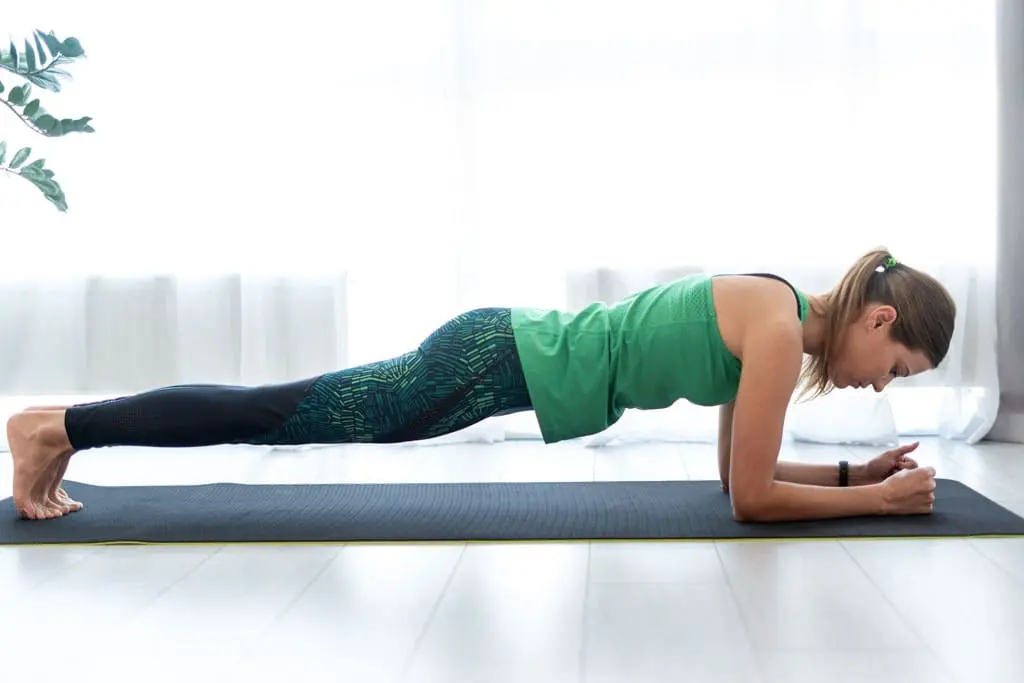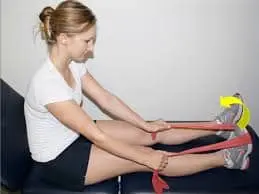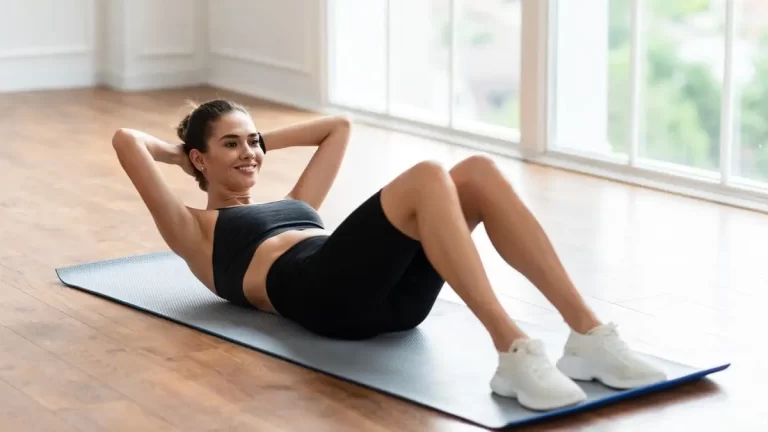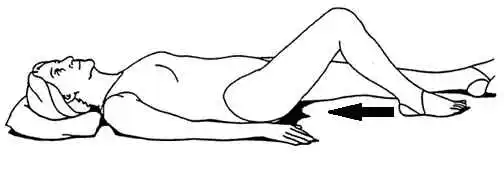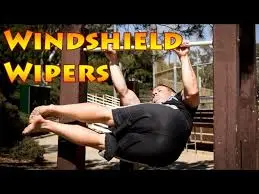How to Do Plank Exercise? Health Benefits, Type, and Variations
What is the Plank Exercise?
Plank Exercise, sometimes referred to as an abdominal bridge or front hold, is a kind of isometric core strength training where the object is to maintain a push-up-like foot and hand position for a prolonged period of time.
A Plank exercise could be a wise way to improve your abdominal and core muscles. Your body’s balance will be improved by these workouts, which also strengthen your hips, lower back, and abdomen.
The plank, which involves keeping one body part’s trunk in an extended line off the ground, represents a bodyweight exercise you can perform. The static exercise is quite good in strengthening your core because it targets multiple muscle groups at once.
Plank Exercise Video
Plank exercise’s Health Benefits:
- Strong Core
Your lower back, obliques, and abdominal muscles are among the muscles in your core that planking helps to strengthen. A strong core is necessary to ensure stability, balance, and proper posture. Therefore, this can improve daily mobility and help avoid back pain.
- Improve Posture
You can maintain better posture all day long by strengthening your core with planks. Planks help you keep your spine in a neutral position while performing the exercise. This could help in realigning the vertebrae and raising your awareness of your spine’s natural posture. Better posture during and after plank exercises is a result of improved spinal alignment.
- Increased Flexibility
Planks force you to extend and stretch several different muscle groups, which increases joint mobility and flexibility. The spine, hips, and shoulders can all be protected and maintained by the stability that planks can provide to the core and shoulder girdle. Flexibility exercises and stretches may become safer and more comfortable as a result of this improved stability.
- Improve Your Balance
Maintaining a static position during plank exercises calls for stability and balance. Exercises involving the plank position work the side and deep core muscles in addition to the front. These muscles support the spine and help in regulating the pelvic position. Better balance results from having a more stable core, especially when you need to shift your body’s posture or resist outside forces.
- lessens back pain
The backbone’s vertebrae, or little bones, perfectly line up with the support of the plank posture. In addition to preventing or delaying the onset of back pain in old age, this can help relieve back pain. Additionally, by strengthening your abdominal muscles, this pose helps in supporting your body’s weight when walking upright. This may help in preventing back pain even more.
Several forms of Plank Exercises:
Exercises involving planks can be done in a variety of ways to meet varying fitness levels and objectives.
Forearm Plank
- You must lie on your stomach over a mat to complete this workout.
- You need to keep your posture upright and elevate your entire body at the right times with your foot and forearm.
- To stay in this position for a few seconds, keep your elbows under your shoulders and your back erect.
- Then return to your neutral position.
- Then relax.
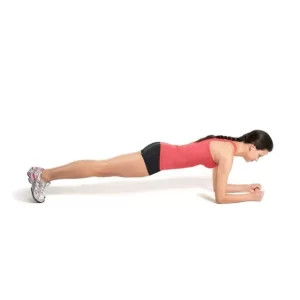
High plank
- Position yourself so that your face is facing the floor while you lie prone.
- Put your hand below your elbow and under your shoulder.
- Then gradually raise your knees until your hands and toes are the only things supporting your body weight.
- Our objective is to form a straight line from the top of your head to your heels.
- Maintain a straight back and core.
- Hold this position for a few seconds.
- Then return to your neutral position.
- Then relax.
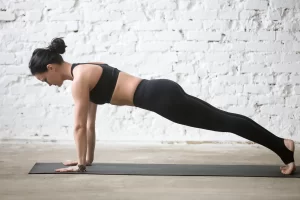
Up-Down Plank
Mostly, this is a fitness-based variation of the plank workout.
- This workout combines the forearm plank with the high plank.
- Consider a tall plank at first.
- While remaining in a plank position, slide onto one forearm, then the other.
- Next, place one hand on the mat and extend your arm; then, switch to a high plank posture by repeating with the other hand.
- For every single repetition, repeat with the other arm that initiated the transition.
- Then return to your neutral position.
- Then relax.
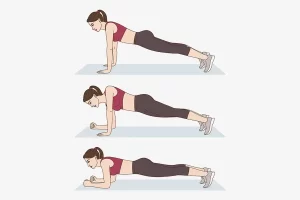
Mountain Climbers
- This is a cardio-based version of the plank workout where you start in the standard plank position and quickly move your knee to your chest while alternating between the two.
- Plank with your knees to your chest for between eight and ten repetitions.
- Then return to your neutral position.
- Then relax.
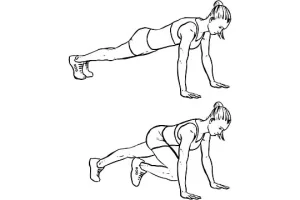
Knee Plank
A variation of the high plank exercise is the knee plank. Beginners can benefit from this exercise.
- You must lie prone with your face directed toward the floor to perform this plank exercise.
- Put your hand below your elbow and under your shoulder.
- Afterward, gradually maintain your body weight while only using your hands and knees.
- It’s important to mark a straight line from your head to your knees and heels.
- Hold your back and abdomen straight.
- Then return to your neutral position.
- Then relax.
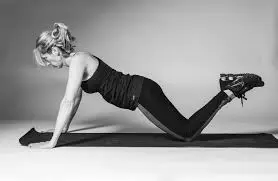
Reverse Plank
Given that you will be holding yourself differently during these exercises, your balance will improve. You’ll see that by performing this exercise, you might improve your gluteal strength, shoulder flexion and mobility, and core muscle control. It’s also a low-key arm exercise because it targets your triceps, deltoids, and the rectus abdominal muscles.
- To perform a reverse plank, lie down so that your head is above the floor.
- Then, try to place your hand under your shoulders, raise your hips as high as you can, and extend your legs.
- Hold this position for a few seconds.
- Then return to your neutral position.
- Then relax.
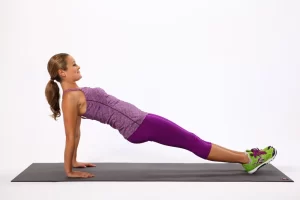
Side Plank
Once you are comfortable in the standard high and forearm planks, try a side plank exercise.
For back pain on one side, this is a great exercise. Building muscle in the lumbar spinal stabilizing region, shoulders, and hips is also advantageous.
- You will start on your strong side.
- Using your hand out in front of your body for balance, try supporting your upper body on your lower elbow.
- The ideal location is where your elbow and shoulder joints connect.
- Put your legs together such that your heels come into contact next.
- Squeeze your core and glute muscles to raise your hips.
- Try raising your upper arm toward the ceiling if you are balanced and comfortable doing so.
- Take a turn and perform the motion on the opposite side.
- Your bottom knee should remain on the ground for further support if you wish to simplify this exercise.
- Then return to your neutral position.
- Then relax.
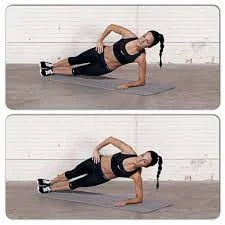
Plank Leg Lift
This plank exercise is comparable to the single-arm plank exercise, but it requires you to test your balance with your legs. The plank leg raise improves your abs, forearms, anterior deltoid, obliques, glutes, quadriceps, and triceps in addition to improving your balance.
- Place yourself lie down on the ground in a prone position.
- Consider placing your hand below your elbow and shoulder.
- Next, gradually raise your knees until only your hands and toes are holding your body weight.
- Between your head and your heels, you want to make a straight line.
- After you’ve done that, raise just one leg and move on to the other.
- Proceed alternating between the legs for a few seconds.
- Then return to your neutral position.
- Then relax.
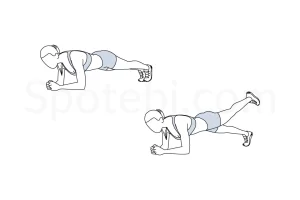
Plank with shoulder tap
Multiple muscle groups, such as your hip flexors, abs, back, glutes, hamstrings, and quads, are worked when performing planks with shoulder taps.
This exercise increases the difficulty of the standard straight-arm plank.
- Begin with your arms extended in the classic plank position.
- If you need extra stability, spread your legs apart.
- Raise your right hand off the ground and make contact with your left shoulder while maintaining a taut core.
- After that, put your right hand back on the ground.
- Reach up and place a hand on your right shoulder.
- Then return to your neutral position.
- Then relax.
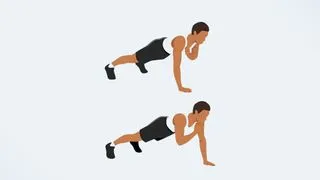
Use the following advice to exercise safely:
- Make sure your body is warmed up enough before exercising.
- If you experience pain when exercising, stop.
- You should progressively increase the number of repetitions and duration of your exercises to prevent overtraining and sore muscles.
- When exercising, always use the proper form to avoid injury to your body and to get the benefits you want.
- Avoid dressing too tightly during your exercise session to allow your body to move freely. Instead, wear loose clothing.
- Maintain a straight spine while you work out.
- It is advised that you inhale deeply ahead of working out and gently release the air through your mouth.
When did you stop doing plank exercises?
- Whether an injury to your shoulder exists.
- If you get a shoulder ache throughout the exercise.
- Pregnant women
Frequently Made Posture Mistakes When Planking:
Core, arms, and shoulders are just a few of the body parts that planks target. In addition to helping with posture, this full-body exercise can also reduce back pain. It helps to maintain proper form when performing plank exercises. Injuries to the wrists, shoulders, neck, and lower back can result from a poor plank, as can any other plank exercise problem.
Following are a few examples of typical posture mistakes
- Tramping Arms
Maintaining a distance between your body and your support arm when performing side planks can strain your neck, wrist, and shoulder. To prevent plank exercise injuries, you should perform side planks with your shoulder positioned over your wrist. To achieve the ideal plank position, place your supporting hand directly over your shoulder, hold your other hand high above, and extend your legs into a “T.”
- Dropped Hips
You may drop your hips in exercises such as high planks (where your arms are fully extended) and low planks (where you only work your forearms). In addition to the extra strain this places on the shoulders and lower back, you are also targeting the core muscles by doing this. Always align your hips with your shoulders to improve your posture.
- Putting your head forward
Instead of tilting upward, which could put a strain on the neck, your neck should be in line with your body. Maintain a downward gaze on the ground.
- hunching over
If you hunch over, you are not using your abs enough and are shifting more of the weight onto your arm. Verify that your shoulders are remaining wide and down.
Summary:
A great strength exercise to work into your fitness routine is the plank.
No matter your fitness level, there are a lot of plank variations you can do. You may continue pushing yourself and developing your strength and stability with these modifications, which will help you stay injury-free while contributing to your general well-being.
You can find a plank variation that works for you, whatever your level of experience.
It’s easy to take action at present: Find a variation of the plank exercise that you enjoy doing, then begin including it in your weekly or daily routine. Within no time, you’ll be moving toward a healthier, more stable, and stronger version of yourself.
FAQs
To abs, what plank works best?
If you’re willing to work on strengthening your upper body, the straight-arm plank is the best plank exercise because it works your triceps and core. For those who want to work on their abs, the forearm plank is more effective and helps you strengthen the transverse abdominis muscle.
Do planks help burn fat around the belly?
Although planks work well for strengthening the muscles in the core, they cannot be used to reduce fat in one particular area of the body, such as the belly. Planks are great for building muscle in the core, but they are ineffective for decreasing body fat in specific areas, like the belly. To reduce total body fat, including belly fat, three things are needed: a balanced diet, regular exercise, and a calorie deficit.
Are arms strengthened by planks?
You can strengthen your arms and legs by performing planks. Additionally, planks can help you with posture and balance.” Once you have a basic plank under your belt, there are plenty of variations to make the move more interesting.
To what extent is planking effective?
It works your entire core, not just your abdominal muscles, and it can also strengthen your thighs, upper back, shoulders, and chest. So, planks are beneficial to the body for a variety of reasons.
What kind of exercise is a plank?
One type of exercise for strengthening the core is the plank. This exercise helps to support our spine, maintain good posture, and strengthen our body muscles. Certain varieties of planks can also help you become more resilient.
References:
- N. P. (2023a), physiotherapist (20 May). How Do Plank Exercises? Types and Variations of Health Benefits. Mobile Clinic for Physiotherapy. Plank exercise: health benefits, types, and variations (https://mobilephysiotherapyclinic.in/)
- May 19, 2023: Cronenberg, C. These are 15 Plank Variations You Haven’t Tried But Really Should. Well line. Straight arm (full) plank #4. Various versions of the 14-plank that you will later regret
- On November 10, 2023, Kaur, N. 7 Different Plank Exercise Variations and Their Advantages “Nutrabay Magazine,” Nutrabay Journal. @nutrabay.com/magazine/7-different-types-of-plank-exercise-and-their-benefits
- May 3, 2024; Toshi, N. advantages of performing the plank exercise daily. pharmaEasy blog. Benefits of completing the plank exercise every day: https://pharmeasy.in/blog/#:~:text=Advertisement-,FAQs,exercise%20to%20your%20everyday%20schedule.
- Image 3, Plank: Exercise Technique, Ideal Form, Advantages, and Muscles Targeted. January 17th, 2023. DMoose. How Plank Proper Benefits Muscle Worked: https://www.dmoose.com/blogs/training
- Image 5, TheGYMkc. (n.d.). Workout Guide: Adapted Plank [Low Palm]. The modified knee plank flat palm exercise at The Gym KC
- Image 8, Daisy (18 June, 2021). Exercise Guide with Illustrations for Plank Leg Lifts. SPOTEBI. Plank-leg lifts are one type of exercise that you can do at Spotebi.com.
- Image 9, Bell, L. (30 July, 2023). I planked my shoulder taps fifty times a day for a week. The Guide of Tom. I performed fifty plank shoulder taps every day for a week. This is what happened to my abs.

